|
Methodism and Mow Cop
In 1800
there were no Churches on Mow Cop, the Anglicans showed no interest in the
area and the Methodists had reverted to just staying inside their own
churches - open air sermons as established by Wesley has died off.
Methodist has been quite
strong in Staffordshire from the late 1700s, as has been the case in
many other industrial parts of the country. By the early 1800s the
movement had split into several distinct sects.
One of these wings,
primitive Methodism is said by some sources to have originated on Mow
Cop. Hugh Bourne, a carpenter and William Clowes, two Methodists,
organised open-air meetings during which there were strong displays of
religious zeal.
Unfortunately for the men
the Methodist Conference condemned their actions, expelling them from
the movement in 1807. Together with their followers, they carried on
worshipping in their preferred manner and in 1811 adopted the name
Primitive Methodists. Over time this 'new' Methodist movement spread
throughout the country, gathering many disciples along the way.
Hugh Bourne described the
people of Mow Cop and Harriseahead as a bunch of godless people, and
stated that you could not walk the area without physical or verbal
assault. And so in 1801 he held prayer meetings at Pointon's Farm, which
was to be the site of the very first camp meeting. Bourne had no idea how
popular these meeting would become and before long there was not enough
room in the farmhouse. He promised the people that they would one day have
a full day of prayer on Mow, thus began the camp meetings and the birth of
Primitive Methodism.
 on Primitive Methodism
on Primitive Methodism
The village of Mow
Cop
"The village
of MOW COP is situated in an elevated position on the border of North
Staffordshire and South Cheshire, about 2 miles north - east of Kidsgrove,
with extensive views across the Cheshire Plain. The village takes its name
from the nearby rocky hill, which is nearly 1,100 feet high. The rock
itself, which is of Yoredale Rock, is the oldest in the neighbourhood.
Stone from the area was used in the past for millstones. The hill was used
as a triangulation point, firstly by William Yates for his Map of
Staffordshire, drawn in 1775, and secondly, by the Ordnance Survey
surveyors for the first Ordnance Survey map of the county.
Mow Cop
folly was erected in 1754 as an eye-catcher for the Wilbraham family of
nearby Rode Hall, and is a well-known landmark. It is an early example
in England of an artificial creation of the ruins of a castle. A dispute
over the ownership and upkeep of the folly took place in 1850 between
the Sneyds, who by then owned the land on the Staffordshire side on
which part of the folly stood and the Wilbrahams, who continued to own
the land on the Cheshire side. The dispute was settled amicably with
both sides agreeing to share the building.
In his
Natural History of Staffordshire, published in 1686, Dr Robert Plot noted
that at a smith’s shop at ‘Mole Cop’ he had noted an automated anvil,
which he described in detail and illustrated in his book. This is his
description: “I found an Engine that managed a large Sledg to so great
advantage, that it frequently supplyed the defect of a man ordinarily had
elswhere for that purpose, the Sledg being set into an Axis of wood from
whence goes a rodd of Iron fastened to a Pallet, that reaches out a little
beyond the Anvil, which being drawn down by the foot of the Smith, who
keeps time to it with his hand-Hammer, is returned again by three springs
of holly that clasp the Axis in a contrary way”.
St Thomas’
Church was built in 1841-42 in the Gothic style at a cost of £1665. The
ecclesiastical parish was formed soon afterwards in 1844. The Wesleyan
Methodist chapel was built in 1852, although there is some dispute about
the date. It is now a museum for Methodism and for the Mow Cop area as
well as being a private home.
Mow Cop will
always be associated with the birth of Primitive Methodism. This came
about as a result of the great Methodist open air camp meeting held in
1807 by Hugh Bourne, a carpenter, and William Clowes, a potter. As a
result of this meeting and another like it at Norton in the Moors, Bourne
and Clowes were expelled by the Methodist Conference, Methodism’s ruling
body, who disapproved of the fervour shown at such meetings. Bourne and
his followers were undeterred and it was from this beginning at Mow Cop
that Primitive Methodism was formed in 1811."
Staffordshire Past Track
|
Bank Chapel - Wesleyan 1839
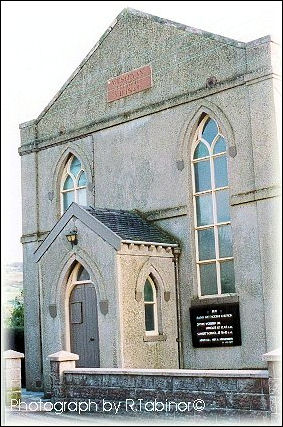
Bank Chapel -
Wesleyan Methodist 1839
picture: © R. Tabinor
The Bank Chapel was
the very first Wesleyan Chapel to be built on Mow Cop. An enthusiastic
Methodist farmer and miller, John Ford,
built it in 1839
 |
Mow Cop Primitive - originally
1841
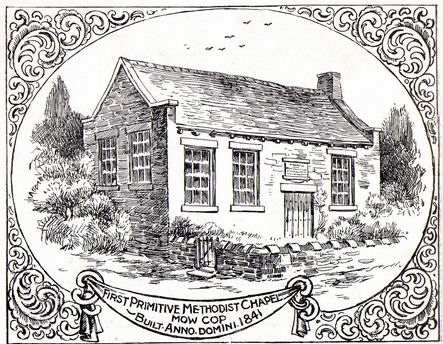
First Primitive
Methodist Chapel
Mow Cop
Built A.D. 1841

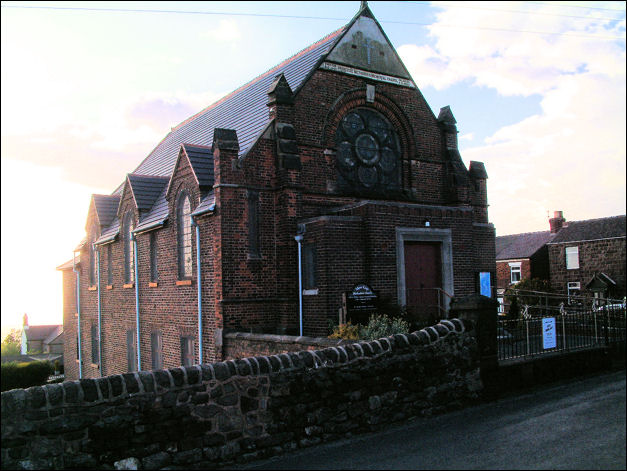
Mow Cop Primitive
Methodist Chapel
Situated on the corner of Woodcock Lane and Primitive Street
The first Primitive Methodist
Chapel was built on Mow Cop was in 1841 just twelve months prior to St
Thomas and The Wesleyan Methodist Chapel. It was at first a much smaller
building than today and was built just behind the site of the Coronation
Mill. By 1857 it was to small for their purposes, and so a larger Chapel
was built 100 or yards away next to Pointon's Farm.
It took three years
to build and was ready by 1860. It was enlarged in 1882 after being
damaged by storm damage.
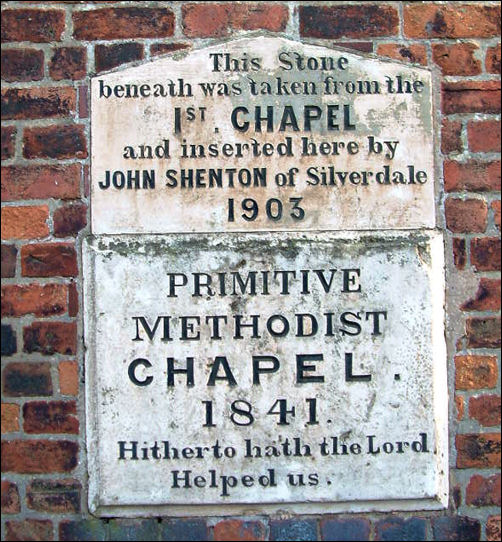
The stone from the 1st
Primitive Methodist Chapel
1841
The original date state from
the 1841 chapel was discovered and in 1903 was inserted in the
side of the new Chapel.

Primitive Methodist
Memorial Chapel
Erected AD1860
Enlarged AD1882

|
Mow Cop Wesleyan - originally
1842
Hillside
Methodist Chapel
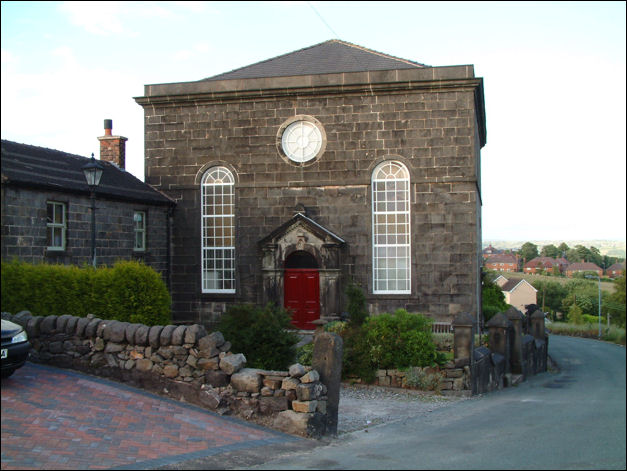
Wesleyan Memorial
Church, Mow Cop
Now known as the Wesleyan Memorial
Church was originally built in 1842 then re built in 1852 - the later
Church was built around the original church and then the small church
was dismantled from within.
The 1851 Census of Places of
Religious Worship shows the Wesleyan church being full to capacity
with 177 persons, average attendance 150. The building closed as a
chapel in 1986 and is now the Chapel Museum
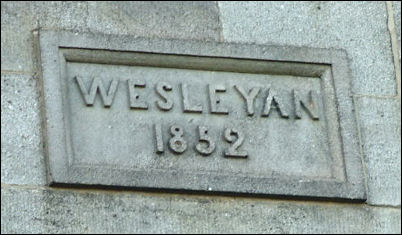
Wesleyan 1852
 |
Mount Pleasant Primitive -
originally 1856
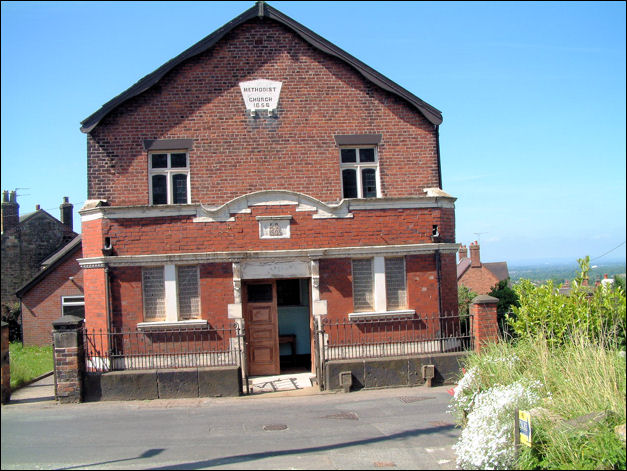
United Methodist
Free Church, Mount Pleasant
The United Methodist Free Church, Mount Pleasant, it was built on the
slopes of Mow Hill in 1856 - probably as a Primitive Methodist Church
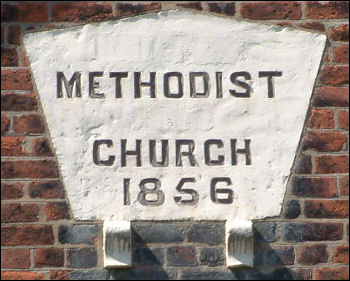
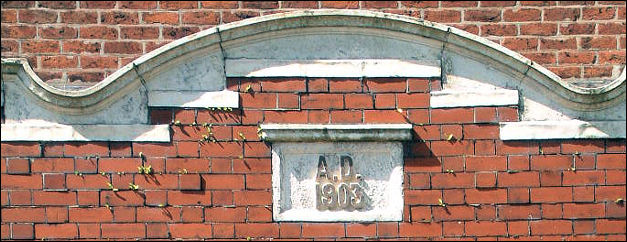
the porch added in 1903

|
![]()
![]()
![]()
![]()
![]()
![]()